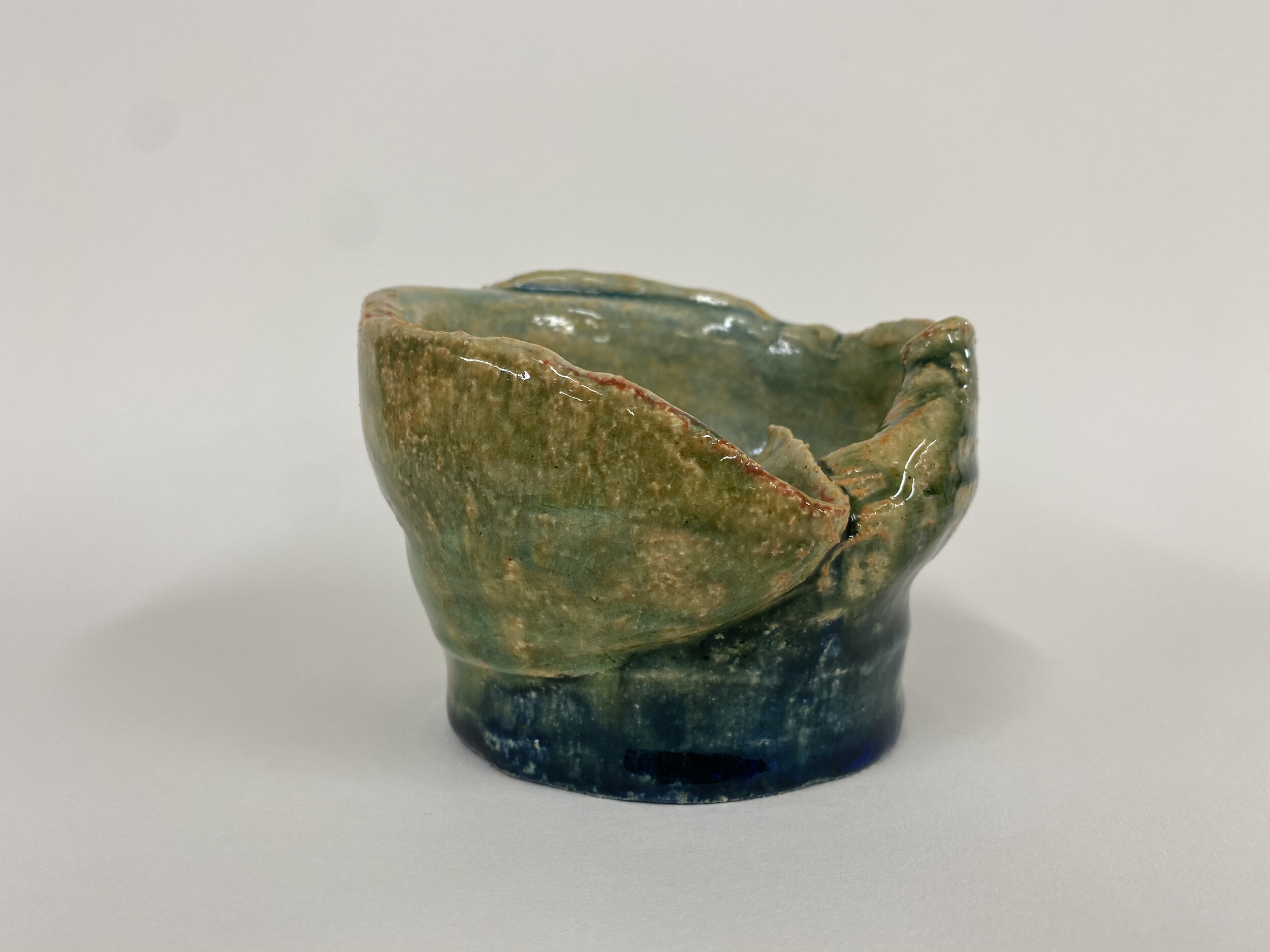Development: Plateaus II 'Accidental Properties.'
Timothy Morton, in his book Hyperobjects, reminds us that the root meaning of ecology is Oikos [1] - House. We can elaborate on how we perceive the places where we rule, play, travel, fall, laugh, jump, run, or dedicate our thinking to the nouns we inhabit such as shops, lakes, parks, streets, stairs, countries, airports and on we go..
As the last weeks lead up to the final days that are imminent, I seemed to have stumbled on something that I find asks me to consider the accident or “the failure.” [2]
So I would like to introduce exactly that. The Failure.(fig. 1)
Fig. 1 Accidental Properties I. A pottery that takes on its own sense of performance and embodiment.
This ‘pot’ - I am only describing it that way because it started on a potting wheel, has developed into a new form of work that I now am starting to produce in synthesis with my CCS and ongoing practice of reinvention of what that practice is.
In early May whilst spending time in the ceramics department on a regular basis, I tried ardently to master the potting wheel. Something immediately dawned on me that pottery was going to be a struggle. Firstly, one needs a steady approach and a modicum of patience to benefit from what the processes have to offer.
Something, I sorely miss sadly. Yet, as a first effort, an in a moment of where success eluded me, something came out of the process. A moment of accident that I know have come to rely on, to produce the result I want. The folding within the cast in fig. 1, has in many ways become what I know work too.
The methodology is to capture this moment between success and failure. I throw the pot until the capitulation of the side wall. It is in this split second that I pull away and let the form hols in a stasis that solidifies that occurence forever.
Jenny Saville, speaks about a same moment in the gazes that she captures in her paintings. She talks of paintings 35-40,000 years ago, marks in a cave, And before we were and after we are dead, we don’t know anything either side of that. Within this correlation between ancient civilizations and the man on the moon “we still don’t know anything beyond those limits […] and for me it’s very interesting to work on those boarders” [3]
Without acknowledging this moment, this edge, this boarder, I would not be able to understand the significance of this same moment between what could be yet what is profound enough as not being the former. I think, for me, this failure is what makes the work so successful.
Stuart Lee
Balanced Accident 2021
Work in Progress
Wood, Steel Wire, Concrete, Porcelain, 24ct Gold Leaf.
[1] Morton, Timothy, Hyperobjects, (Minnesota, Minnesota University Press, 2013), p. 116
[2] Lisa Le Feuvre, ed., Failure: Documents of Contemporary Art, (Massachusetts: MIT Press, 2010)
[3] Jenny Saville, ‘The Un-Private Collection: Jenny Saville + Jennifer Doyle’, The Broad, YouTube, 13 February 2019, <The Un-Private Collection: Jenny Saville + Jennifer Doyle> [accessed 20/05/2021], 35:32s. This construct of experiential limits creates a place for Saville to work “the boarders of those limits”, which explore the “edges of life and death”. If when confronted or presented with our own mortality, if this what we are to infer from Saville’s viewpoint, I found her case “I think art is there, in order, to make us feel ok about that”, in an alignment with the historic metaphysical reasoning of existence laid out in this essay. Art makes sense of life, life is what we experience, and the body is the vessel that contains the mind. The place where perception exists.


